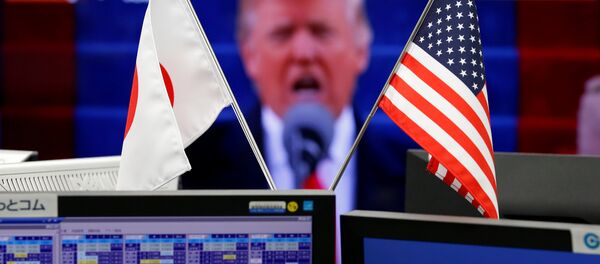MOSCOW (Sputnik) — The Bank of Japan on Thursday kept its negative interest rate of —0.1 percent as well as its 80-trillion yen ($719 billion) asset purchasing stimulus package.
"The Bank will apply a negative interest rate of minus 0.1 percent to the Policy-Rate Balances in current accounts held by financial institutions at the Bank," the bank said in a statement.
The bank has also decided to keep its 10-year government bond yield target at around zero percent, thus keeping the same annual pace of government bond purchasing at 80 trillion yen, according to the statement.
Japan's central bank first cut its interest rate to below zero in early 2016 in an effort to stimulate the country's stagnating economy as well as avoid slipping into deflation.
Japan's economy, which is currently the third largest by nominal GDP in the world after the United States and China, has been affected by stagnation and slow economic growth for years. The country's core inflation rate has hovered around and below zero since April 2015, continuing along the same trend since the 1990s, but has rebounded slightly since the adoption of more vigorous stimulus measures in late 2016. However, it remains far below the 2-percent official target.
In 2012, Japan's Prime Minister Shinzo Abe announced measures to halt economic stagnation, including structural reforms, monetary easing and fiscal stimulus to help the country emerge out of its "lost decades." The plan, which was dubbed Abenomics and focused mainly on monetary policy, was introduced after Abe’s election in December 2013. It has been described as a failure by the opposition.


